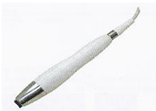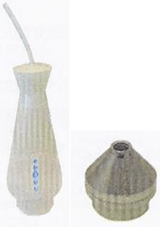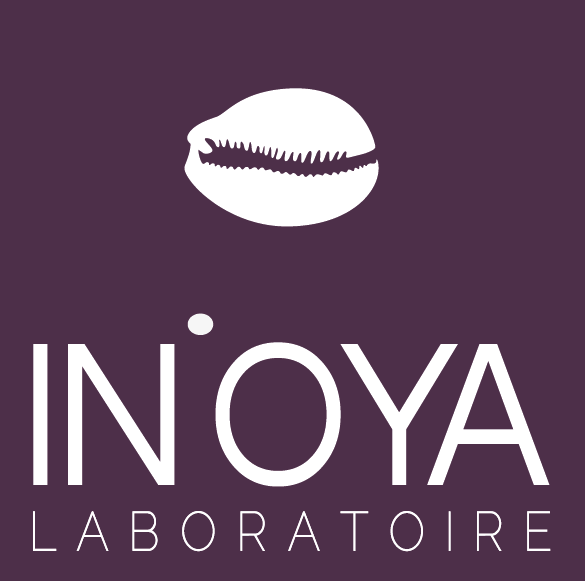What are the properties of the skin ?
2m² for 5 kg in adults, the skin is one of the most important organs of the human body. It constitutes our envelope and ensures a protective role against the multiple aggressions it undergoes. It is also able to regulate the temperature of our body, intervenes in perception and plays an important role in immunity.
Composed of 3 layers, the epidermis, dermis and hypodermis, it is covered with a hydrolipidic film consisting of a mixture of sweat and sebum. This film ensures the impermeability of the skin and limits microbial aggressions. In addition, the epidermis, meanwhile, is not waterproof and allows active ingredients or moisturizing agents of cosmetic care to pass through. Due to the permeability of the epidermis, the skin continuously loses water, this is the insensitive loss of water (PIE), it is measurable and reflects the level of hydration of the skin.
Our body is made up of 70% water, it is essential to bring it water, especially since it will naturally secrete between 1 and 2 liters per day. That's why, it is recommended to drink between 1.5 L and 2 L of water per day.
In order to know the individual properties of our skin, the IN'OYA laboratory has the OYA SKIN DIAG technology, a precise and sophisticated diagnostic device that allows us to explore the greatest characteristics of our skin, namely its level of hydration, the amount of sebum present on the surface of the skin or the phototype of the skin. The diagnostic device also makes it possible to evaluate the appearance of wrinkles or hyperpigmentation spots, clues allowing us to choose the most suitable treatments for our skin.
How to evaluate the water content of the skin ?
Our body is composed of 70% water. On a daily basis, it needs a water supply covering its losses and which is about 1.5-2 liters.
But how does our body lose water ?
Through the bladder and other organs but there is also a loss of water that occurs in the skin. These include insensitive water loss (PIE) which is made possible due to the permeability of the epidermis. This PIE is measurable and provides information on the level of hydration of the stratum corneum or stratum corneum that forms the most superficial layer of the skin. The IN'OYA laboratory has a precise and sophisticated tool allowing it to assess the individual PIE. It is a probe with a sensor capable of measuring the conductance of the skin after emission of an electric field. This instantaneous and painless measurement gives a reliable clue regarding the hydration of the skin.
Hydration probe OYA Skin DIAG

How do I determine the typology of my skin ?
The most superficial layer of the skin, the epidermis, is covered by a lipid film composed of sebum that provides some protection against microbial agents and maintains its hydration. Sebum also ensures a certain impermeability to the skin and is partly responsible for its suppleness. Nevertheless, when it is too abundantly secreted, it can cause the appearance of acne and is responsible for the so-called fatty appearance of the skin. On the other hand, a defect in sebum production is responsible for the dryness of the skin and hair.
The OYA Skin DIAG Diagnostic Device makes it possible to accurately assess the level of sebum on the surface of the skin, a very good indication of the nature of the skin. It is thanks to a photometric sensor associated with a support to collect the secretion of sebum, that the device can instantly measure the production of sebum at the level of the forehead or cheeks. The analysis on these two regions is essential to have a reliable indication of the typology of the skin. Indeed, the forehead as well as the wings of the nose and the chin form the " T " zone of the face, naturally more oily than the cheeks.
Photometer & sebum analysis support OYA Skin DIAG

How can I better understand the typology of my skin ?
A second analysis measuring the dilation of the pores is an additional element in order to better understand the typology of our skin. The pores of the skin form microdepressions on the surface of it and correspond to the opening of the pilosebaceous canal. Very little dilated, in children they appear much more clearly on the face of adolescents prone to acne. Indeed, the influx of sebum tends to distend the pores of the face. In addition, the dilation of the pores of the face also signs of age, the loss of collagen in the dermis of the skin, causing a relaxation of it does not spare the pores, giving them a more ovoid and dilated appearance.
The OYA Skin DIAG device allows an accurate assessment of the level of pore dilation thanks to a photometric probe and a lens that will measure the volume of opening of the pores reflecting their level of dilation. This analysis perfectly complements that of the sebum level in the context of oily skin or that of the level of wrinkles in older women.
OYA SKIN DIAG Pore Dilation Measurement Probe

Am I concerned by a hyperpigmentation spot problem?
Hyperpigmentation spots can appear on all skins, regardless of their phototype. They are classified into 3 main families according to their origin. Sunspots, more often visible on fair skin, are the consequence of unprotected exposure to the sun. They manifest themselves episodically in the form of melasma or following the accumulation during life of exposure of the skin to the sun, this is the case of senescence spots. Hormonal spots, more characteristic on matte skin occur as a result of a significant hormonal fluctuation and mainly affect women. The pregnancy mask is an illustrious example. Finally, the inflammatory spots most frequently found on matte to black skin, occur following an aggression of the skin, even benign, such as an acne pimple, a bite, a burn or a shock ... They represent the leading cause of dermatology consultation for black women. Unsightly, these spots can be eradicated after an accurate diagnosis and with the help of specific and targeted anti-stain care. The IN'OYA range of stain care is particularly effective for this type of problem on the most pigmented skin.
The OYA Skin DIAG device is an accurate, fast and efficient measurement tool to assess the importance of stains and represents a key in the management of hyperpigmentary spots. For this, it has a photometric probe coupled with a lamp that makes it possible to clearly detect hyperpigmentary spots in contrast with the natural complexion of the skin, regardless of its phototype. The analysis of the photos taken instantly makes it possible to know the stage of evolution of the stain.
OYA SKIN DIAG photometric probe for the analysis of hyperpigmentation spots

Do wrinkles appear on my face ?
Concern number 1 of women of clear phototypes, wrinkles are only the reflection of the aging of the skin. An inevitable and more marked phenomenon in individuals with a lean tendency, it is nevertheless possible to mitigate their appearance and depth by adopting good gestures and using appropriate cosmetic care. Moisturizing the skin is the best way to limit the appearance of wrinkles. Significant exposure of the skin to the sun, smoking and stress are 3 aggravating factors that can be relatively easily preserved. Wrinkles are classified into 2 groups, those called expression, signs of the facial expressions of the person, they appear first. And there are the so-called old age wrinkles consequent to the sagging of the skin with age.
The exploration of wrinkles is mainly done on 3 levels, at the level of the forehead, the nasolabial fold and crow's feet. Evaluating the depth and importance of wrinkles makes it possible to advise each woman on the care to be applied and the daily actions to adopt in order to moderate the appearance of these.
To analyze the effect of time on the skin, the IN'OYA Laboratory has an analysis tool that distinguishes the 3 regions most affected by wrinkles, namely the forehead, the nasolabial fold and crow's feet. The OYA Skin DIAG device has a photometric probe and a specific applicator to clearly appreciate the depth of wrinkles
Photometric probe and applicator for wrinkles.

Which sun protection is suitable for my phototype ?
How not to be lost today in front of the sun protection department. All of them claim effective and long-lasting protection, but what is it really ?
The phototype is based on the sensitivity of the skin to UV. This sensitivity is directly related to the melanin content in the skin. Melanin is the pigment that colors our skin. This melanin is the combination of pigmented molecules, eumelanins on the one hand of brown/black color and pheomelanins of yellow/red color on the other hand. The color of each individual's skin is based on the amount of eumelanin-like pigment or pheomelanins that goes into the composition of melanin. Eumelanins are the majority in matte to black skin and protect against UV rays unlike the majority pheomelanins in white to Asian skin that do not protect against UV aggression. Thus, to know your phototype is in a way to know the complexion of your skin. The phototype also depends on the response of the phototype to exposure to the sun's UV rays.
Thus, the OYA Skin DIAG device makes it possible to provide reliable and precise elements as to the skin phototype thanks to a quick questionnaire that provides information on the susceptibility of the skin to sun exposure and then to the analysis of a photographic snapshot of a region of the skin with little exposure to the sun, the inner side of the forearm, to define the skin tone. The integration of these results by the device will lead to the determination of the phototype of the skin. The classification of phototypes defines 6 groups differing according to the color of the skin and its sensitivity to exposure to UV rays.
OYA Skin DIAG photometric probe for skin phototype analysis



